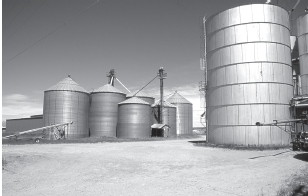 |
 |
|||||
| Kin Kletso From the available archaeological evidence, it appears that Kin Kletso, New Alto, and Casa Chiquita were essentially grain elevators. Very few artifacts were found in these buildings, and the supporting rectangular rooms were for support of the main grain silos. Other uses such as raw cob sorting, habitation, and ceremonial uses may be indicated for the rectangular rooms. “Massive storage units, not residences, were presumably used for feasts and/or redistribution of goods” (Lekson). These two “silos” with their support walls were used for centralized long term corn storage. I suggest that each one of the Chaco Canyon Great Houses is the centralized storage structure for one clan who brought their corn to the central Chaco Canyon from throughout the San Juan Basin. According to the dates of construction, Pueblo Bonito, along with perhaps Una Vida, was most likely founded by the Scarlet Macaw family/clan. The subsequent eleven buildings were founded by direct descendants or relatives of the original Scarlet Macaw clan. The primary use of all thirteen Chaco Canyon buildings was for long term corn storage and for festivals, based on this storage capacity. Again, according to the dates of construction, the subsequent buildings suggest that sons, grandsons, and great grandsons were perhaps the builders of the other named Great Houses. As highlighted by my transhumance proposal, each one of the central Great Houses had one or more “outliers” associated with it. |
“When the farms are small they build small silos and as the farm size increases they build progressively larger silos but continue using the small ones. There is a problem with ‘smut’ which is a soil born mold that comes in on the grain. The silos are fumigated once per year to protect it from confused flower beetle”( Tanner). This is consistent with the building phases of Pueblo Bonito and many of the Great Houses or, possibly, Anasazi grain storage silos across the San Juan Basin. |
|||||
 |
 |
|||||
| Examples of Chaco “over-engineering.” This support wall building was absolutely necessary to contain the tonnage of grain that was stored in these “kivas.” This engineering support is absolutely consistent with outward pressure being exerted by liquid or loose grain (above). Original kiva room ratio of 1:6 or 1:5 and in later times 1:15 to 1:25 (Van Dyke). |
||||||
 |
||||||
 |
 |
|||||
copyright 2005 - Richard D Fisher - DigitalTeamWorks.com